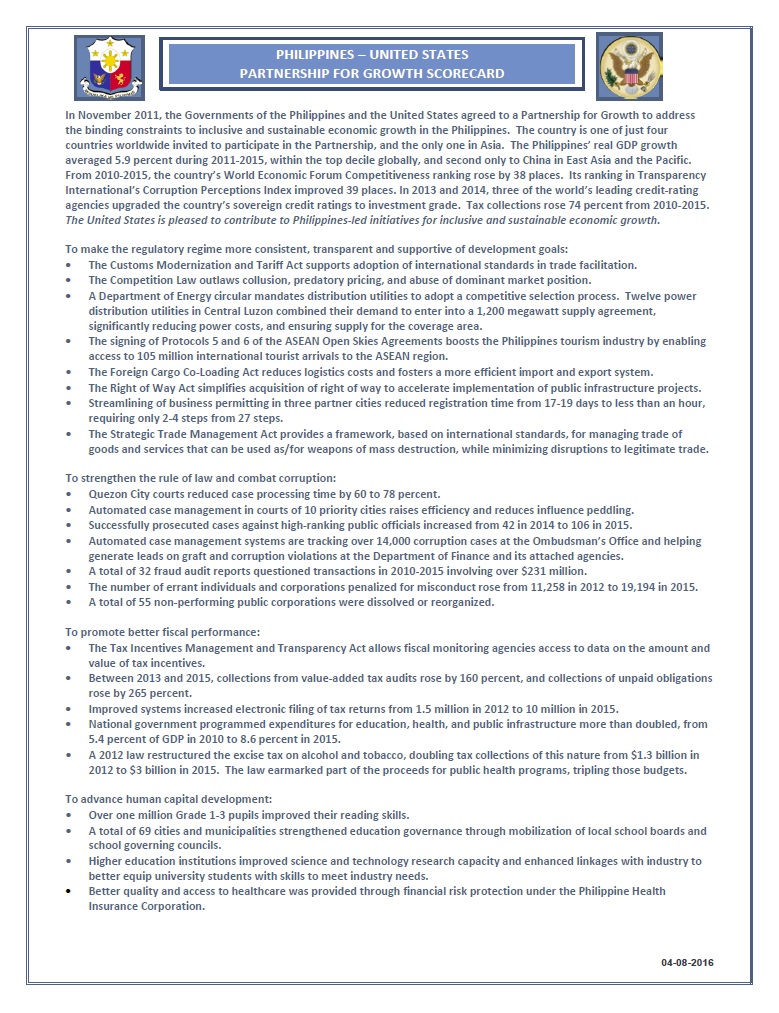Speeches Shim
In November 2011, the governments of the Philippines and the United States agreed to a Partnership for Growth to address constraints to economic growth and development in the Philippines. The partnership is a "whole-of-government" endeavor to unlock the growth potential of partner countries to become the next generation of emerging markets.
The Philippines was one of just four countries selected to join the Partnership for Growth and the only one in Asia. The partnership supports the Philippines' priorities to achieve inclusive and resilient economic growth. It stimulates institutional reform at the national and local levels to mobilize domestic and foreign investment.
In 2017, it has evolved to become the "Partnership for Growth with Equity" to emphasize the U.S. government's support to the Philippine government's goals of enhancing the social fabric, reducing inequality and bolstering growth potential, in line with the Zero to Ten Point Socioeconomic Agenda and as described in the 2017-2022 Philippine Development Plan.
Constraints to Growth in the Philippines
Economic officials from both governments led an extensive analysis to determine binding constraints to growth in the Philippines and provide a guide to maximize development interventions under the Partnership for Growth. Based on this analysis, governance, public financing, infrastructure and human capacity were identified areas that required the most attention in order to accelerate and sustain broad-based and inclusive growth in the country.
Based on these constraints and the priorities of the 2017-2022 Philippine Development Plan, the Partnership for Growth with Equity is focusing on development interventions around four inter-related themes: macroeconomic and fiscal policies, rule of law and anti-corruption measures, infrastructure and competitiveness, and human capital development.
A Transformative Impact in the Philippines
Partnership for Growth with Equity success requires strong and sustained levels of engagement from both the Philippines and the U.S. toward producing a transformative impact on economic growth. Since 2011, the Philippine government has implemented major policy and institutional changes. This contributed to the Philippines emerging as one of the fastest growing economies in the region, with gross domestic product growth averaging 6 percent between 2010 and 2016. Poverty has also declined, dropping from 26.3 percent of population in 2009 to 21.6 percent in 2015. In 2013 and 2014, three of the world's leading credit-rating agencies upgraded the Philippines’ sovereign credit ratings to investment grade. The two governments continue to work together to ensure that the growth generated is inclusive, sustainable and resilient.
News
Philippines-U.S. Partnership for Growth Scorecard ![]() (pdf - 151k)
(pdf - 151k)



Comment
Make a general inquiry or suggest an improvement.